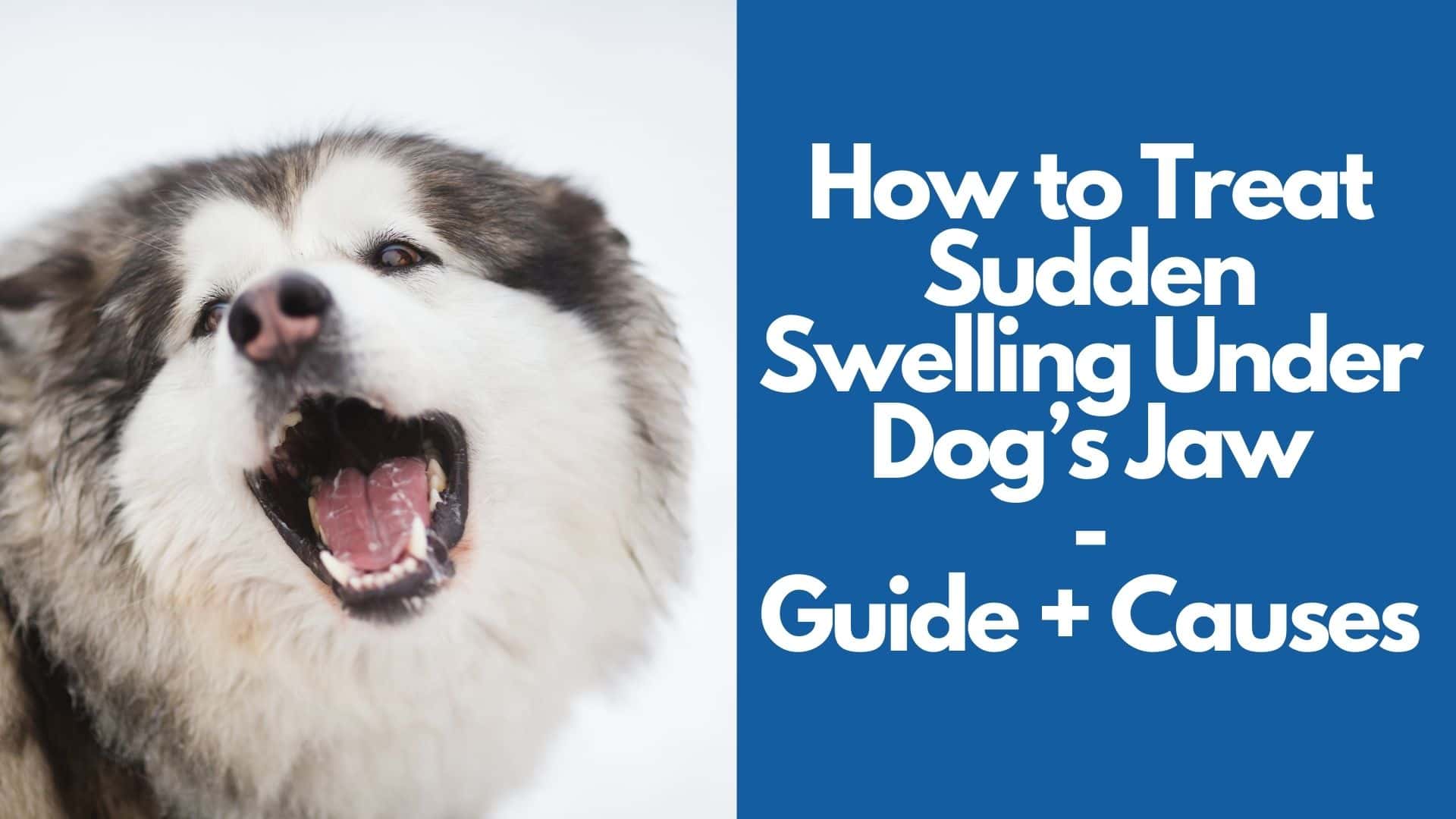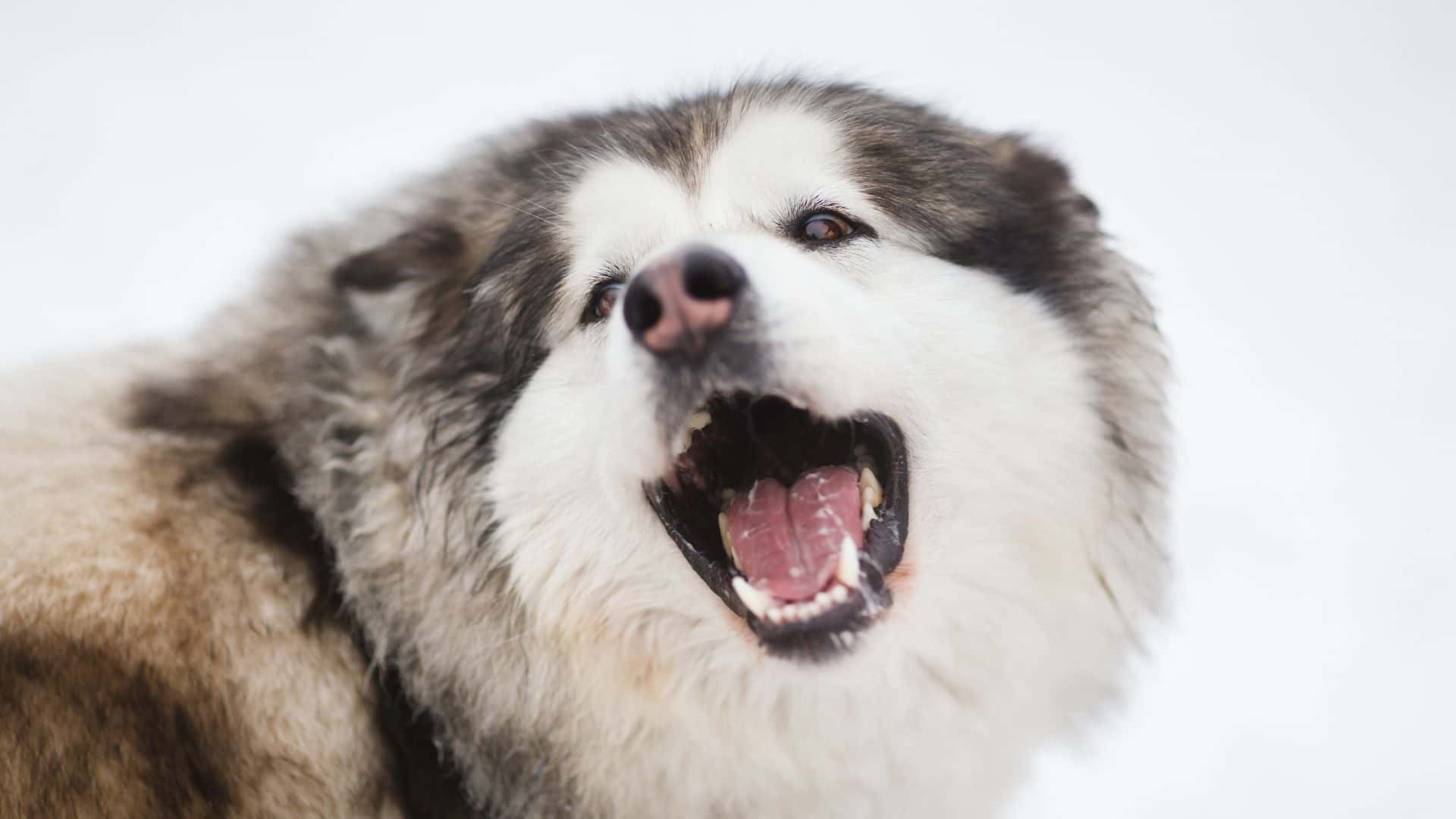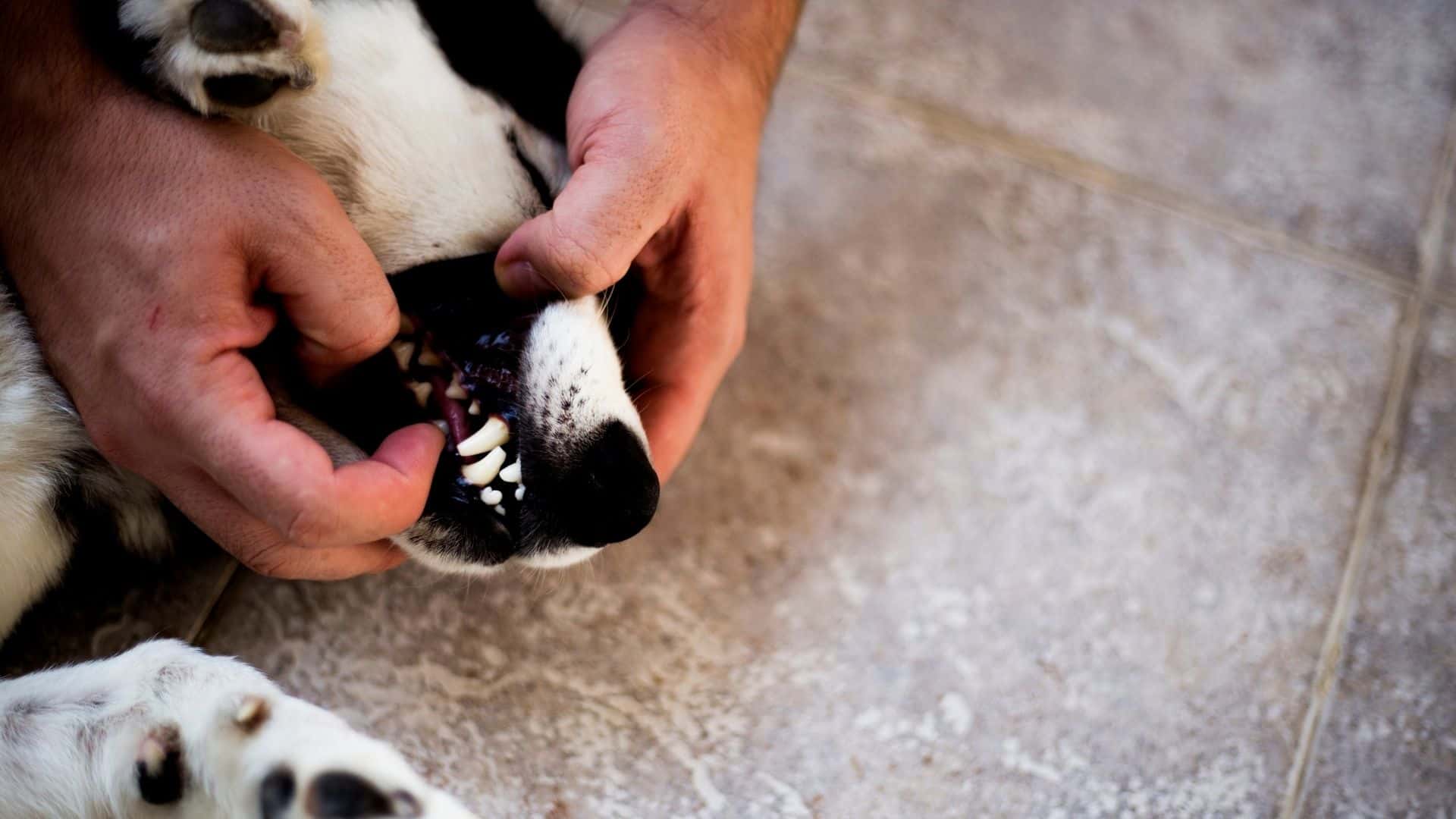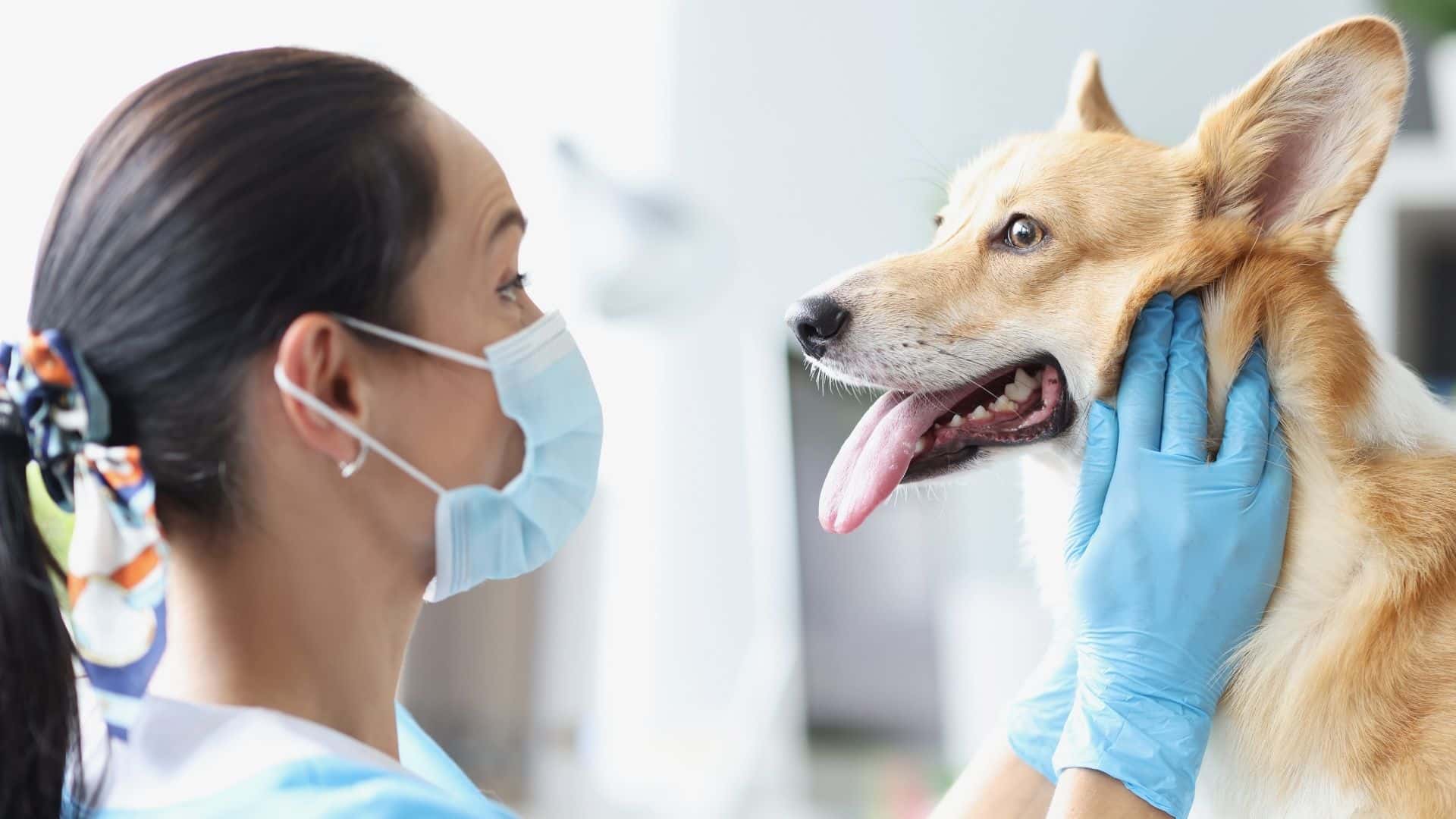There are four salivary glands in dogs and cats, and each is susceptible to cysts. In medical terms, these cysts are called Sialoceles (or a salivary mucocele). In dogs, it is the most prevalent salivary problem, and the swelling beneath their neck or jaw is the most obvious sign of this condition. By reading this guide, you will be able to know, How to Treat Sudden Swelling Under Dog’s Jaw.
Dogs are the most common victims, but cats can also be affected. There are several breeds that are more susceptible to Sialocele, such as poodles, German shepherd dogs and dachshunds, as well as Australian silky terriers.
In dogs, facial edoema can be caused by anything from dog bites to dental issues. Swelling can be a minor complication, or it can necessitate immediate medical attention.
Knowing the indications of facial edoema and what to do when it occurs will help keep your pet healthy and pain-free.

What is meant by sudden swelling under your dog’s jaw?
A salivary mucocele is formed when a salivary duct ruptures, allowing fluid to accumulate in the soft tissues around it. Soft, non-painful masses are commonly found around the head and neck, but some may also appear beneath the tongue or around the eyelids. Draining the mucocele and surgically removing the afflicted glands is the treatment for this ailment.
When the salivary duct ruptures in the mouth, it results in a swelling of the salivary gland, or mucocele, which is the medical term for this condition. The dog’s head or neck may become swollen as fluids build outside of the gland, causing the surrounding tissue to enlarge. The afflicted glands can be surgically removed to treat a salivary mucocele, and the patient has a fair chance of making a full recovery.
The causes of salivary gland swelling fall into a variety of categories, each with a different set of contributing elements. To describe it another way, this puffiness or “growths” are caused by the swelling of the salivary glands, which can be seen in the head and neck region. In dogs, many of the swellings of the salivary glands are harmless, while others require surgery, some of which is more extensive than others. Your pet should be taken to the vet if he is vomiting or regurgitating or drooling, or if he has lost his appetite.
Swelling of the salivary glands in dogs can occur for a variety of reasons and illnesses, leading to a swollen head or neck.
A dog’s face may bloat up for a number of causes. Swollen faces are usually the result of a more serious issue. Facial edoema can be a sign of a more serious condition. However, medical attention is nearly always required. When a dog’s face swells suddenly, it’s most likely due to an allergic reaction. A tumour or growth on the face may cause facial edoema that takes longer to appear.
Swelling of the connective tissues in the dog’s mouth is known as an oral or salivary mucocele. Swelling looks like a mucus-filled sack, and it is three times as common in dogs as it is in cat breeds. Mucoceles can occur in any dog, regardless of breed. In most cases, draining the fluid and prescribing antibiotics are the most effective treatments.
What are the causes of swelling under dog’s jaw?

Don’t try to figure out what’s causing your dog’s facial swelling on your own; it might be life-threatening if the swelling spreads to the throat. Immediately take your dog to the clinic if its face appears to be swollen or crooked.
The following are some of the most common causes of dog face swelling:
1. Allergies
It’s possible for dogs to have an allergic reaction to everything from chemicals to food to plants to spiders to bees (though this is quite rare). To avoid a life-threatening allergic response, bring your dog to the doctor as soon as possible if their face looks puffy, they have difficulties breathing, their gums are purple, blue, or they pass out.
Antihistamines, steroids, antibiotic ointment, a particular diet, and skin or blood testing can all be used to treat allergies. If necessary, epinephrine can be administered.
2. Mucoceles
When the salivary glands are injured or burst, salivary fluid leaks into the surrounding tissues, resulting in these cysts.
3. Neoplasms
These are cancerous growths. Although this is extremely uncommon in both dogs and cats, it appears to be more common in cats. What’s more, it can be found in any species.
Most of the time, the sick animal is over the age of 10.
Poodles and Spaniels appear to have a predisposition for this condition, but there is no specific breed connected with it.
In most cases, the tumour is malignant, with carcinoma and adenocarcinoma being the two most common types.
Possible and common infiltration and metastases to nearby lymph nodes and lungs
Recurrences are common following surgical removal.
Regardless of whether or not surgical treatments are available, they react well to radiation.
4. Dentist’s Concerns
An issue with the teeth or mouth may cause facial edoema.
2 Infections in the mouth, such as tooth abscesses, can penetrate the gum line and cause a pocket of pus to form. Swelling beneath an eye is the most common sign of this condition in dogs. If a dog’s teeth are broken, injured, or have periodontal disease, its face will swell up as well.
5. Trauma
Face swelling can be caused by an injury to the head, face or skin. Swelling can occur as a result of common wounds, such as animal bites. Even if a snake bite occurs elsewhere on the body, the victim’s face and neck may become swollen.
6. Abscesses
Head and neck abscesses appear abruptly, generally accompanied by a fever, and can leave your dog’s head or neck looking asymmetrical. They are commonly caused by animal bites or other wounds. Dogs with face swelling and vomiting may have an abscess, which can be exceedingly unpleasant.
The sooner an abscess is treated, the better. Surgery, anti-inflammatories and antibiotics may be used as part of the treatment plan.
7. Sialometaplasia
Sialometaplasia necrotizing or necrotizing sialometaplasia is also known as necrotizing salivary gland necrosis or infarction, which is caused by squamous cell changes in various parts of the salivary components (ducts and lobules) with ischemic necrosis (death of tissue due to lack of blood supply) in the salivary glands. Between the ages of 3 and 8 years, it is especially common in tiny breeds like Terriers.
When a dog’s jaw is inflamed, what are the signs and symptoms?
Soft, nonpainful mass around the cervical region is the most common clinical symptom of a salivary mucocele. Other symptoms may include, depending on the location of the mucocele:
- Eating and swallowing difficulties
- Breathing difficulties
- The mass is bleeding.
- If infected, a fever.
- Types
Depending on the soft tissues in which saliva accumulates, there are a number of different forms of salivary mucoceles. When saliva accumulates in the upper cervical area or under the jaw, cervical mucoceles are the most common type of mucocele in dogs. Sublingual or ranulamucoceles occur when it accumulates on the mouth floor; pharyngeal mucoceles occur in the back of the throat; and zygomatic mucoceles occur around the eye.
Sialocele development is a long-term process that takes place over time. In most cases, there is a soft, non-painful lump in the upper neck or jaw that grows over time. Symptoms include:
- Eating is a challenge.
- Suppressing one’s gulp
- Mucocele-related bleeding
- Respiratory discomfort and difficulty in breathing
- Infected cysts, which are normally not unpleasant, can cause pain and a high fever.
How to diagnose the reason of swelling under dog’s jaw?

An in-depth physical examination, including palpation of any obvious lumps around the head and neck, will be performed by the veterinarian at your dog’s first visit. Tumors, abscesses, and other cysts can all be clearly distinguished from a mass if the salivary mucocele is present. A needle aspiration of the fluid can be used to confirm the diagnosis. salivary mucocele is characterised by a viscous yellowish or blood-tinged fluid.
Additional tests, including as a complete blood count and a urinalysis, may be performed by the veterinarian prior to treatment. Veterinarians use this to get a sense of your dog’s overall health and how well it can handle surgery.
Costly treatment is required for swelling of the salivary gland. Start looking for pet insurance as soon as you feel your dog has swelling in their salivary glands or is otherwise at danger.
In order to arrive at a correct diagnosis, your veterinarian will need a thorough history of your pet’s symptoms, their severity and length, as well as their elimination practices, nutritional regimens, and feeding habits, as well as your impressions of their attitudes and actions.
Palpation (touching and exerting light pressure) of the enlarged nodule and the surrounding tissue will be required by your veterinarian during the physical examination of the affected pet. An abscess, tumor, or one of several retention cysts may be the cause of the swelling, and if so, the vet will likely request more tests to rule those out.
A physical examination and an in-depth review of your dog’s medical history will serve as the foundation for the diagnosis. Oral or salivary mucoceles are rarely diagnosed with imaging because there are no abnormalities in the patient’s lab or blood work to help with the diagnosis. An aberrant cell formation, abscesses from infected teeth, or other more serious causes of the inflammation should be ruled out as a primary goal of treatment.
What is the treatment of swelling under dog’s jaw?
Dogs can develop mouth and throat tumours, which can cause face enlargement, difficulty swallowing, bleeding, and an overpowering stench. Tumors that affect the eye socket can also cause the eye to protrude in dogs.
Salivary mucocele surgery is the most common treatment for this condition. Recurrence is likely to occur within weeks or months of aspiration, so it is not a solution to the problem.
It is common practice to remove the mandibular and sublingual glands on the affected side of the mouth in order to treat cervical, ranula, and pharyngeal mucoceles, as well as marsupialization in cases of ranula mucoceles. Zegomatic mucoceles are difficult to treat since they are located near the eye and require a more complex surgical technique.
Dogs with swollen salivary glands might get a variety of treatment options. In order to come up with a suitable treatment plan for your dog, your veterinarian will take into account these options:
1. Aspiration
Aspiration of swollen salivary glands is a short-term fix that will likely need to be repeated in a few weeks or months; this method has the potential to introduce bacteria into the area, increasing the likelihood of infection if one has not already occurred.
2. Surgery
Surgery to remove the salivary gland and the mandibular and sublingual glands on both sides of the afflicted area of edoema.
The surgical excision of the mandibular and sublingual glands may be followed by a marsupialization surgery, which includes cutting an elliptical cut in the cystic lesion and suturing it to the rim of the oral mucosa.
3. Antibiotics
As a treatment for inflammation and infection prevention, antibiotics are frequently used. Non-surgical drainage of the enlarged region is the most prevalent way of treatment (s).
Watch How to recognize and treat Salivary Mucocele in dogs – home remedies | Video
What is the reason of sudden swelling under dog’s jaw?
The sudden swelling of a dog’s face following a bee sting or bug bite is the most common cause of a dog’s allergic reaction. Even if your dog is indoors, he or she may have a similar reaction to immunizations.
What causes swelling in salivary glands of dog?
Mucoceles can be caused by bite wounds, ear canal surgery, blunt trauma to the face or head, or a blunt or foreign object entering inside the dog’s mouth.
What do you do if your dog’s salivary glands are swollen?
It is common practice to remove the mandibular and sublingual glands on the affected side of the mouth in order to treat cervical, ranula, and pharyngeal mucoceles, as well as marsupialization in cases of ranula mucoceles.
What is the sensation of a swollen salivary gland in dogs like?
Salivary Gland Swelling in Dogs: Symptoms
Canine neck and/or head enlargement of any kind. Saliva or drool leaking from the mouth. It is possible for an enlarged area to be painful to touch or palpate. Intermittent or continual, it is possible.
Can a dog live with swelling in salivary glands?
A great prognosis for a normal life is provided by draining the mucocele and removing the afflicted salivary glands completely. Following the excision of the mandibular and sublingual glands, dogs do not experience a dry mouth.
Conclusion

In the event that your veterinarian has prescribed painkillers or antibiotics, follow their directions to the letter. During his recuperation, give your dog a quiet spot to relax and fresh water to drink. For this reason, it’s critical that you keep an eye on the wound itself as well as the surrounding area for signs of infection.
After the mucocele is drained and the ruptured glands are removed, the prognosis is generally good, and most dogs recover and return to a regular life.
Bottom up
Please comment below about your ideas and share this “How to Treat Sudden Swelling Under Dog’s Jaw: Guide + Causes” article with your friends.
Stay tuned with our website to find out more exciting stuff. Don’t forget to check out our previous articles too.
Until the, Read about, How to Keep Your Dog Under Control Outside in 7 Ways | Guide





